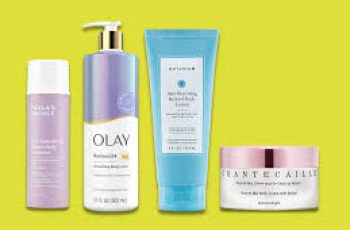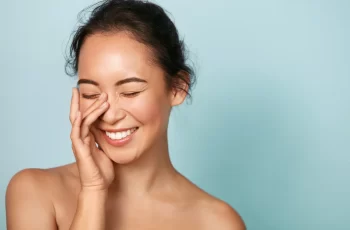What is the Environmental Working Group (EWG)?
The environmental working group (EWG) is an organization that conducts independent research on various chemical ingredients, consumer products, and more. The object of their research is to help people understand the environmental impact of the things they buy and use on their bodies.
The EWG uses their reports to establish safety and sustainability ratings for ingredients and products regularly, and they update their findings when new research is presented.
Their focuses are broader than simply medical products; they also conduct research on issues regarding agriculture, food & water, energy production, chemical toxicity, and more.
When we discuss ingredient safety in our ingredient library, we regularly refer to the EWG’s safety and sustainability rating because we consider their data fairly reliable, and their research is public.
Their scoring system is between 1-10 when rating ingredient safety and sustainability. 1 is considered the best score, with 10 being the worst score.
Dermatologists, pharmacologists, and many other kinds of doctors use the findings provided by the EWG to help keep their patients healthy.
what is the ewg?
Is the Environmental Working Group trustworthy?
The EWG is considered trustworthy insofar as they do good, transparent research on the most important ingredients in public health.
There have been claims online by various sources that the EWG tends to slightly overstate the danger of an ingredient, but they do not ever understate danger. This is to say, if the EWG thinks an ingredient or product is safe, it likely is because they are so willing to call things dangerous.
Because the EWG is so tentative to deem ingredients or products safe, we consider them a good resource for consumers concerned about the environment and their own health.
On the other hand, products or ingredients with worse safety ratings on their websites might not be quite as dangerous as they appear. If you’re ever looking to use an ingredient or product deemed unsafe by the EWG and you don’t want to take their word for it, their research is available through a search engine within their website.
You can find our dermatologist’s opinions on ingredient safety in this clean ingredient blog or by looking up the ingredient name in our ingredient library.
Who funds the EWG?
Interestingly, the majority of funding given to the EWG comes from individual donations, not corporate pharmaceutical entities.
According to their website, about a third of their funding comes from private charitable foundations.
The remainder of their proclaimed income comes from events, licensing, and “miscellaneous” sources.
Overall, the EWG is remarkably transparent regarding the breakdown of their funding, making an effort to demonstrate their particular interest in keeping people safe instead of pushing bad products.
It’s always important to keep the bankrollers of a research organization in mind when relying on their work. In instances where corporations conduct their own independent research on their own products, that can’t be considered reliable data.
For that reason, it is reassuring to see organizations like the EWG conducting research on a broad swathe of products and ingredients in a manner seemingly unmanipulated by large pharmaceutical companies.
Who works for the EWG?
The research teams as well as the board members of the EWG have a diverse set of professional backgrounds. Research scientists, data analysts, toxicologists, and many other types of people contribute to the research operations at the EWG.
Just as with their funding reports, the EWG is forthcoming with the names and faces of their team members. This is good for consumers because people are held more accountable when their faces and names are public.
The people at the EWG make appearances on national news regularly to state their findings, and are often referenced by popular media outlets (like John Oliver’s “Last Week Tonight.”)
This organization styles itself as a genuine proponent for public health, and each of the people involved with their research seem willing to put themselves into public view. You can check out their team pages on their website as well.
The bottom line is that anybody can do research, but the people at the EWG are actually doctors with an actual interest in public health.
Do we work for the EWG?
We do not work for the EWG, or any particular research council mentioned in our ingredient blogs.
We do not receive any kind of benefits from them for mentioning their work in our blogs, and we do not seek to either. The EWG is one of many sources considered in the construction of our ingredient blogs, but certainly not the only one.
The other major source in safety we consider is the Cosmetic Ingredient Review Board (who we also do not work for). Their data on safety precautions is considered overly cautious by some experts, which honestly makes us comfortable using their grading system.
Otherwise, we look far and wide for compelling, verified research on common skin care ingredients, most often using published journals from within the Dermatology community, and frequently referring to research conducted at the Baumann Cosmetic & Research institute in Miami, Florida.
The EWG is a useful resource for our writing because their focus is on environmental sustainability and personal wellness, which many other organizations do not focus on.
In short; our blogs are composed without any corporate or organizational pressures, they are all written 100% independently. You can find our dermatologist’s opinions on clean ingredients here.
Conclusion
The Environmental Working Group is an organization committed to public health that provides transparency in their funding, research, and personnel.
Through their research, different grades of safety and sustainability are applied to products; this helps consumers make safe choices for their skin care and general wellbeing.
The EWG tends to label ingredients as slightly more dangerous than they really might be, which is frankly a good thing for consumers; it’s better than understating danger by leaps and bounds.
When we indicate the EWG as a safety reference in our ingredient blogs, we are confident in their scoring, unless noted otherwise.
There are other safety organizations for cosmetic ingredients, primarily the Cosmetic Ingredient Review Panel. In many cases for our ingredient blogs, we will use either or both of these references.
If you’d like to learn more about the Environmental Working Group and work they do for public health, we definitely recommend checking out their website so you can form your own critical analysis of their research.
We hope you feel more confident about finding sustainable choices in skin care!
Need help choosing skin care products?
Take the quiz and shop by your Baumann Skin Type,
DQH Knowledge drop: In your 20s, your skin cell turnover decreases. (Cell turnover is a key component in keeping your skin youthful.) You know what else slows down? Your collagen production. Starting in your 20s, collagen decreases by about 1 percent per year. Should you want to prevent fine lines and wrinkles, start by eliminating behaviors that contribute to premature aging. “If it’s bad for you, it’s bad for your skin,” says dermatologist Michel Somenek.
“Cigarette smoking reduces blood flow to the skin and causes premature wrinkling and a dull skin texture. Making the repeated pursed motion to inhale can also cause smoker’s lines. Alcohol and recreational drugs are toxins for the skin that damage its cellular structure and DNA,” Somenek tells us. “The faster you eliminate vices while you are young, the better chance your skin and body have to recuperate.” Also, adopting an anti-aging routine in your 20s is key. After all, the best offense is a good defense. We spoke to Somenek and experts Joshua Ross and Audrey Kunin to find out more.
Keep reading for the best anti-aging products for your 20s, according to skincare professionals.
Sunscreen
“We all know that the sun is the number one cause of skin aging and starting the prevention in your 20s is very important,” Ross says. “The majority of your sun damage won’t start to appear until you’re in your 30s, so don’t wait until you see it surface or you’ll be behind the curve. Stay ahead of it with a good-quality zinc-based sunscreen worn daily.”
Farmacy Green Defense Daily Mineral Sunscreen
An invisible sunscreen with SPF 30, plus botanical extracts meant to protect skin with tons of antioxidants. Bonus: It’s clean and fine to use under makeup.
Bareminerals Complexion Rescue™ Tinted Moisturizer Broad Spectrum SPF 30
Although we recommend you use your SPF and moisturizer separately, we also understand moments when you don’t have time or energy for that extra step. For those times, this bareMinerals moisturizer is a great thing to have on hand.
Vitamin C Serum
“A great introduction to anti-aging is to start with a vitamin C serum in your morning skincare routine,” Ross says. “It’s a powerful antioxidant that will neutralize free radicals and brighten the skin.” He adds that it’s a great way to counteract the effects of the sun’s harmful rays, which, as previously mentioned, are among the biggest causes of premature aging.
Drunk Elephant C-Firma™ Vitamin C Day Serum
The Drunk Elephant C-Firma is a lightweight serum that promises to give skin a glow by combining the brightening powers of vitamin C with ferulic acid, l-ascorbic acid, and vitamin E. The included sodium hyaluronate is meant to replace hydration loss, so you shouldn’t have to deal with any irritation.
Sunday Riley C.E.O. Rapid Flash Brightening Serum
This potent serum is jam-packed with vitamin C (15 percent, to be exact), which means it’s a potential superstar at both brightening skin and dousing it in antioxidants.
Peptides
Using peptides on your skin has many benefits, says Somenek. “The skin barrier is what defends the body against pollution, UV rays, bacteria, and toxins. It can be damaged by several everyday factors. Using topical peptides aids in building a stronger barrier,” he says. “Peptides comprise elastic fibers, which are a type of protein. These fibers help to make skin appear taut and firm. Peptides can also help repair damaged skin, relieve inflammation, and even out skin tone. Some peptides can kill acne-causing bacteria that is common in 20-somethings.”
Kunin agrees, saying, “Peptides are an excellent entry point for supporting collagen.” She recommends looking for face and eye treatments that contain these collagen-boosting powerhouses.
Charlotte Tilbury Magic Eye Rescue Cream
This Charlotte Tilbury super-emollient eye cream has a base of coconut oil and shea butter (read: it’s incredibly hydrating). Botanicals plus peptides are meant to help reduce dark circles and boost collagen, respectively.
This creamy moisturizer serves up potent collagen-boosting peptides and pycnogenol, and antioxidant-rich vitamin C. “Instead of sitting on top of the skin, peptides penetrate the outer layer so they go deep. The ‘signals’ they send tell the cells to produce elastin and collagen, which are needed for youthful-looking skin,” explains Somenek.
At-Home Peel Pads
Remember that skin cell turnover fiasco we talked about earlier? One way to help support it is by exfoliating. “Exfoliation is important to help keep skin fresh and luminous,” Kunin says. She recommends using at-home peel pads as an easy and effective way to exfoliate.
“The goal in your 20s is to fight the slowing pace of cell turnover. It is wise to use products that gently exfoliate, yet still remove oil and other impurities. Products that have Alpha Hydroxy Acids (AHA) or Beta Hydroxy Acids (BHA) are a good choice.”
According to Somenek, you should only exfoliate two to three times a week. “People of all ages are guilty of over-exfoliating and that can be too much of a good thing,” he says.
Dermadoctor Kakadu C Intensive Vitamin C Peel Pad
A few swipes of this Derma Doctor powerful peel pad promise to leave your skin glowing and smooth, thanks to the seven (yes, seven) types of chemical exfoliants, including AHA and BHA. It also contains vitamin C via Kakadu plum extract for added brightening and antioxidant protection.
KEY INGREDIENTS Kakadu plum extract is sourced from the Kakadu plum, a fruit grown in northern Australia. It contains vitamin C, which restores the skin’s natural barrier, increases collagen production, and soothes irritation.
Dr. Dennis Gross Skincare Alpha Beta® Universal Daily Peel Pads
These are the gold standard of peel pads, with a cult following and over 900 five-star reviews on Sephora. They’re easy to use and contain a blend of anti-aging exfoliating acids.
Emollient Night Cream
“In your 20s, you need to start upping the hydration in your skincare routine. You may have been cautious of over-moisturizing because of acne in your teens, but as you enter your 20s, your skin transitions and becomes drier,” Ross says. “I recommend an emollient night cream added into your evening skincare regimen.”
“Twenty-somethings need to make sure that they are not using creams that will clog their pores and cause excess oil production,” says Somenek. Opt for non-comedogenic products.
Cerave Skin Renewing Night Cream
One great choice is the CeraVe Skin Renewing Night Cream, which is a non-comedogenic night cream that leaves skin soft and glowy. It combines the moisturizing powers of ceramides and hyaluronic acid.
RoC Retinol Correxion Max Hydration Creme
“The best night cream ingredients contain retinol, benzoyl peroxide, and/or salicylic acid or hyaluronic acid. The goal is to moisturize, yet remove excess oil,” says Somenek. This Roc Retinol Correxion cream fits the bill as it contains both hyaluronic acid and retinol so it promises to moisturize while also being non-comedogenic.



